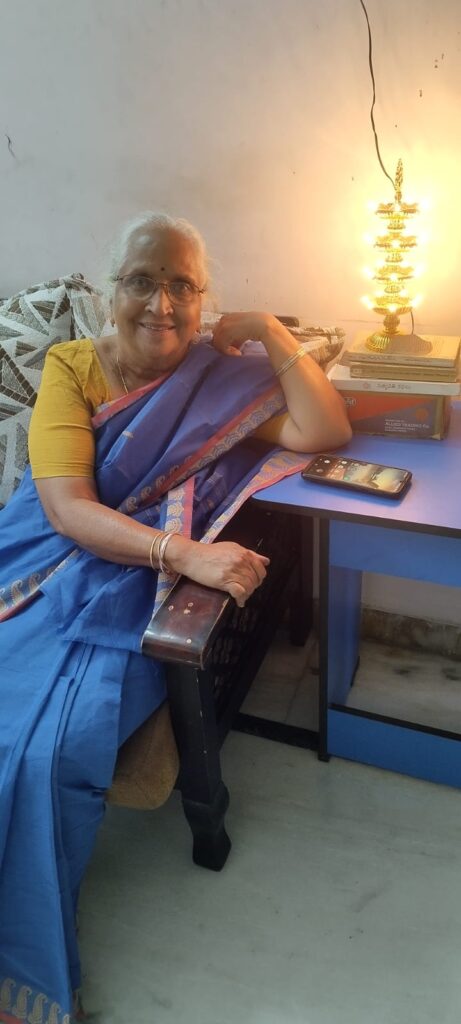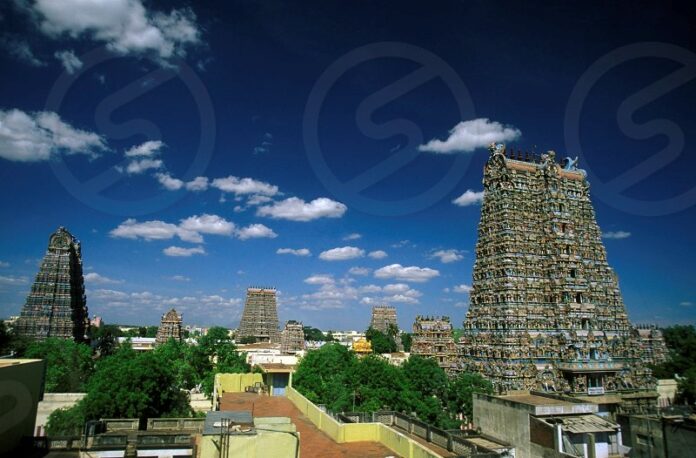Who Are Hindus
Dr Uma Shankari*
Starting today, we are serializing the essays on the temples of India. These essays have been written by Dr Uma Shankari who has done her PhD on the Hindu temples. It had involved living in a small town Thiruvarur, in the Thanjavur region of Tamil Nadu for over two years, visiting several temples in the region, engaging with temple functionaries, exploring the symbolism of the pantheon, myths, beliefs, iconography and worship systems, studying the inscriptions, trying to understand the evolution of the temples and changes through history, and the place of temples in the changing society. The temple study provided the author, a young adult at the time of her reserach, with an entry point into the complex world of the Hindu religion and its relation with the Hindu society, at least as it pertained to the south of India. Here is the first part of her essays on Temples.
A temple, small or big, is a basic feature of the Indian landscape. Every Hindu habitation hosts a small or a big temple, dedicated to some god/goddess or the other. In places like Tamil Nadu, they are so numerous that if you phrase it in a lighter vein, you could say, “if you trip and fall, you are likely to fall at the doorstep of a temple.” In most towns and cities of India, imposing towers of the temples scrape the sky. While the small temples stand at the street corners, grand temples with large area, occupy a special place in the community. On the other hand, humble temples are to be found under ‘Pipal’ or banyan trees housing a statue or picture of one or two gods.
And yet, if you ask a Hindu whether it is compulsory or mandatory or even obligatory to go to temple, (s)he would say, no, it is not. One can be perfectly religious and attain great heights in spirituality without ever entering a temple. True, the Hindu temple is a sacred space, a place to house the god(s), to which it is good and helpful to go but it is not compulsory, not even obligatory. One can worship equally at home, or in the forests or even in the cremation grounds.
If temple going is not obligatory in Hinduism, what are temples for? What do they signify? What is its place in Hinduism? What are the different types of temples? Who are the gods/goddesses housed in a temple? What do the myths /beliefs associated with temples- sthalapuranam- mean? How is temple worship/ritual different from worship at home? How are the temples connected to Hindu scriptures and the philosophies of the Vedas, Upanishads, Bhagavat Gita? How did the Hindu saints relate to them? How are temples connected to Indian society, culture, arts and crafts – architecture, iconography, metallurgy, jewellery, garland making, music, dance, and religious discourses? How have temples changed through history? What do temple inscriptions and other records in temples say? Why are women not allowed into some temples? Can women become temple priests? Can men from any caste become temple priests? Are there regional differences in the temple culture? Who managed the temples? How are temples managed nowadays? What is the role of the government in temple management? These are some questions which this series of essays try to answer. But before exploring the answers to the above questions, let us ask….
Who are the Hindus?
The word “Hindu” comes from Sindhu, and denotes the river Sindhu or the Indus. The ancient Persian language speaking people pronounced ‘s’ as ‘h’. Therefore, the river Sindhu was spoken as Hindu, and the river Saraswathi as Harahvaiti, and the river Sarayu as Horaiiyu , and the word Asura as ahura. The Greeks called the region around the river Sindhu as Indu or Indie.
Later, The Mughals also referred to the country as ‘Hindustan’. The term Hindu was usually used during the Moghul period to differentiate the local population from Muslims. Later on, colonialists used the term Hindu to differentiate the local people from Christians and Muslims.
The country was also knowns as ‘Aryavrata’ in the early Vedic period (1500 BC) and later as Bharatavarsha in the Puranic period (300 AD to 1000 AD). Aryavrata roughly denoted the country below the Himalayas up to the Vindhyas while Bharatavarsha denoted the country bounded by the Himalayas in the north and the sea on east, west and south. South India was called ‘Dakkhan’ or Dakshin, meaning south. The country was, since ancient times, divided into many kingdoms, some of which were at war and some others were allies. Local communities largely managed their own day-to-day matters.
The people of the Indian sub-continent did broadly share some beliefs and rituals, and common places of pilgrimage. I would even say we were enquiring and debating a set of concepts, such as: the origin of the universe, what is God, kinds of gods and goddesses, relation between God, man and the world, nature of good and evil, goal of life for individuals, life after death, rebirth, caste status, etc. etc. But there was no great agreement; in fact, every theory was contested; and these contestations ranged from whispers in private to debates in public. We have heard the story of how a washerman whispered a doubt about Sita’s claim to chastity after remaining in Ravana’s custody for a considerable period of time, which in turn led to the pregnant Sita getting banished to the forest by Rama, the king, to give the washerman the benefit of his doubt. And since that time, all through history, people have debated whether what Rama did to Sita was right or wrong.
We identified ourselves not so much as ‘Hindus’, but as belonging to a village or region, a caste or a sect, and son/daughter of so and so of a gotra or clan: – For example, a person would identify himself as ‘belonging to the village Pazhangudi, of the Brahmin caste, son of Ramachandra, of the ancient clan (gotra) of Rishi Bharadwaja’; or as ‘the son of Sivagnanam, belonging to the Saiva Velala caste, residing in Velangudi’, or as ‘the son of Raja Singh of Rampur village in Jaunpur district’.
The four Varna hierarchy provided a broad template within which the people of a Jati or caste identified themselves- as Brahmin, Kshatriya, Vaisya, Sudra and as untouchables called variously as Panchama in South India, as Chandalas, Mlechchas, Dasyus, in ancient times, and as Chamars, Bhangis, Valmikis, etc. in later period in North India) in the order of superiority. While the Varna framework provided the broad template, it was the Jatis with their divisions and sub-divisions that operated in daily community life and regulated the day-to-day matters of people.
Endogamy (marrying within the caste), commensality (not eating with other communities), identification with a certain occupation were the typical features of the Varna-Jati framework. But individual castes often aspired and claimed a higher position in the Varna hierarchy than they were in. Wealth and conquests provided a chance for individual Jatis (castes) to claim higher position in the Varna hierarchy and often enough such claims were endorsed by the broader society.
The British colonialists, when they came, could clearly identify the Muslims and the Christians, because they identified themselves as such, and they put the rest of the people under the term ‘Hindus’. This term got into official records of the British such as the census, and it has stuck. During the freedom struggle, the leaders also tried to unite the people of different castes, regions and languages under the broad umbrella of Hindus. We now identify ourselves as Hindus officially and unofficially; and we call our country alternatively as India, Bharat and Hindustan.
There is an unnecessary controversy about the term India as being of foreign origin and that we should adopt the word Bharat to denote the country. The fact is both words, India and Bharat, are of Indian origin, the first deriving from the river Sindhu and the latter deriving from the mythical king Bharata.
******

*Dr Uma Shankari who has a doctorate in Sociology from the University of Delhi, has been associated with various social movements since early eighties. She has published a book in Tamil which is about the relation between temples and the Hindu religion and society.



